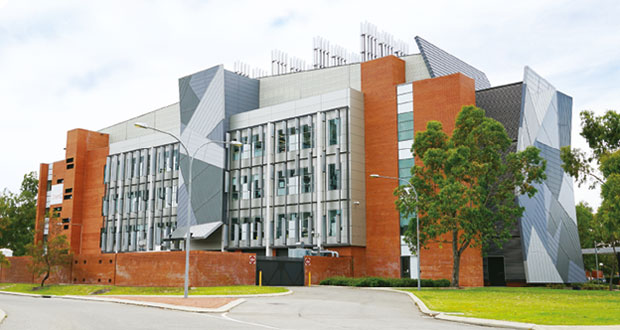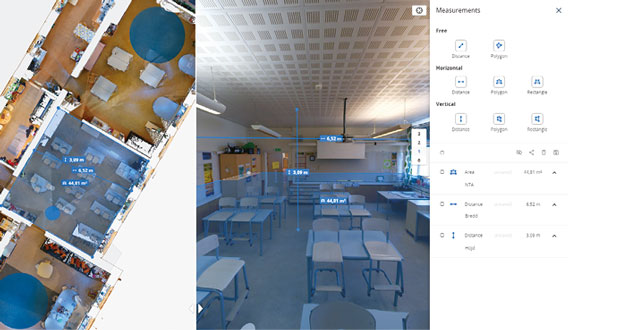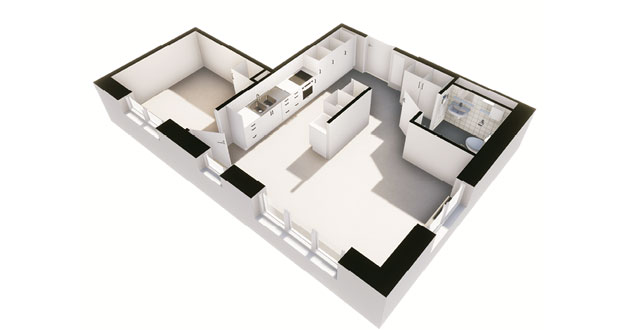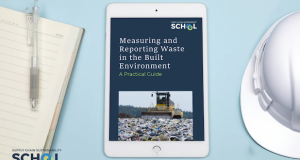BEST PRACTICE FROM AROUND THE WORLD
Curtin University
Ranked in the top one per cent of universities worldwide, Curtin University supports 55,000 students at campuses in Australia, Dubai, Singapore, Mauritius, and Malaysia. It was awarded Australia’s first 5-star ‘Green Star-Communities’ rating from the Green Building Council of Australia (GBCA) and given a sixth star in 2020.
Perth is home to Curtin’s largest campus. Here, the university is seeking to transform the estate into a ‘City of Innovation’, with the first stage covering student accommodation, shops, a boutique hotel, commercial and residential space for lease, and public areas.
To support this, the site’s facilities management team required new CAFM software that could meet its current needs and scale alongside its ambitious growth plans. Currently, Curtin averages more than 25,000 reactive jobs raised per year. Given its ambitious growth plans, routing all requests through the help desk to then manually allocate and track each job was not a viable option.
Here, our QFM solution provided an integrated, mobile-enabled facilities and asset management system to streamline and automate end-to-end business processes for the operations and maintenance portfolio at Perth.
Maintenance workflows have been automated for reactive and planned jobs, with in-built prioritisation escalations helping to ensure the most urgent works are completed first.
Operational efficiencies and enhanced resource utilisation are helping Curtin to operate with a more effective and sustainable maintenance regime which minimises wastage and ensures the estate is well-maintained.
Well-maintained assets use less energy, and Curtin has also been able to remove paper from its processes thanks to going digital – its QFM app contains 60 digital maintenance forms which FM staff use to manage jobs.
Bräckeskolan and Kålltorp, Sweden
The use of technology to achieve sustainability objectives extends far beyond the optimisation of FM on existing campuses.
The Bräckeskolan school in Gothenburg wanted to renovate and modernise its building, but the existing 2D building drawings were inaccurate as changes made to buildings over the years had not been properly recorded.
Through a process of laser scanning, we created a 3D building information model (BIM) model. This gave the architects a complete design model to work from, safe in the knowledge that all measurements and dimensions were accurate. In case there were any concerns, designers could take a virtual tour of the space and collect measurements themselves.
The adoption of BIM not only ensured a smooth project this time around, but has improved modelling so that all future works will be much more efficient.
In Kålltorp, we supported a student accommodation provider to deliver virtual tours to prospective students that were not able to visit the site in-person. This was through the use of visualisation technology that offered students a virtual tour of the space.
Students could explore the rooms, get a genuine feel for the size of the space and even plan on how they would decorate. The tours were such a hit that all 123 apartments were rented out without a single physical tour.
Not only did this offer an inclusive solution, but it’s great for sustainability too – the lack of physical travel can make a big dent in carbon output.
A SUSTAINABLE FUTURE
Higher education institutions have always been known for being forward-thinking and innovative organisations. Now, they have a chance to be a leading sector in estate management and set an example that other industries can follow.
Many are already adhering to the 17 UN Sustainable Development Goals (SDGs) to help them embed social, environmental, and economic practices into their operations and their teachings as a strategic priority.
Some universities have started offering carbon literacy training courses in order to teach students and staff ways to live and work more sustainably. Others, as we have seen, are adopting technology to increase efficiencies in estate management and construction projects.
The learning here is that achieving genuine sustainability success requires a multifaceted approach and collaboration between multiple teams. From the FM side, access to accurate information and insights is critical. It leads to immediate improvements in efficiency, as well as a treasure trove of insights that deliver measurable ROI.
It’s a programme that may take time to develop and implement, but the benefits are clear. First and foremost, change is necessary to reduce carbon output and its impact on climate change. Secondly, with the well-publicised predicted rise in energy costs, minimising utility bills across the university estate will be a major budgetary concern. Beyond that, universities may struggle to compete if students continue to place such a high priority on environmental factors.
We’ve seen some great examples of how institutions from around the world have enhanced sustainability through the power of CAFM and BIM. Hopefully, more will follow suit and set the sector as a standard bearer for environmental achievements.








